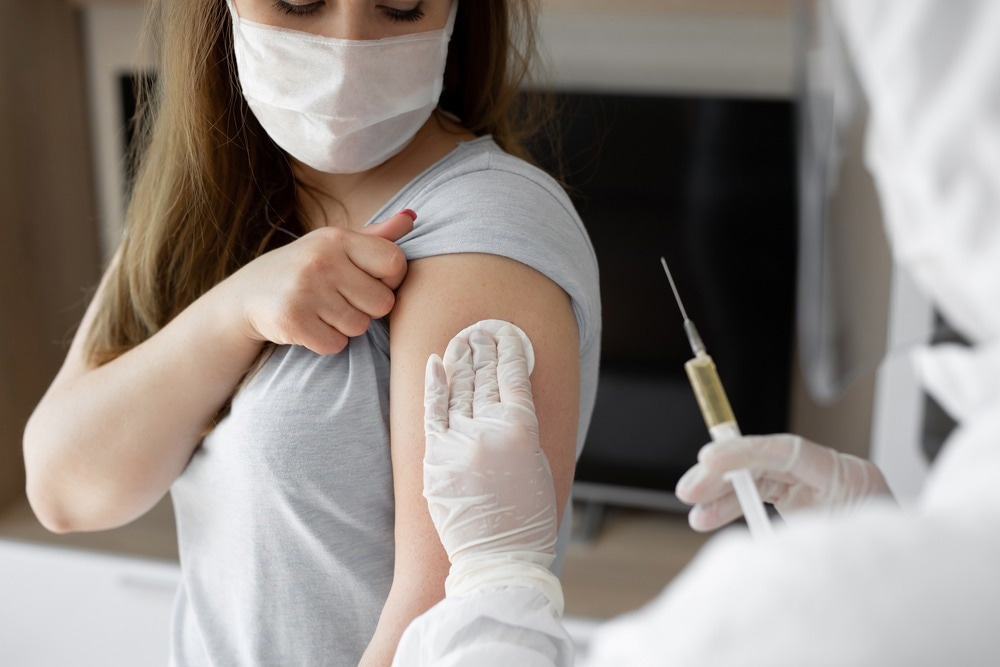In a recent paper published in the medRxiv* preprint server, researchers monitored the safety of the four diverse severe acute respiratory syndrome coronavirus 2 (SARS-CoV-2) vaccines approved by the European Medicines Agency (EMA) and Medicines and Healthcare products Regulatory Agency (MHRA) in 2020 to 2021.
 Study: Cohort monitoring of 29 Adverse Events of Special Interest prior to and after COVID-19 vaccination in four large European electronic healthcare data sources. Image Credit: Studio Peace/Shutterstock
Study: Cohort monitoring of 29 Adverse Events of Special Interest prior to and after COVID-19 vaccination in four large European electronic healthcare data sources. Image Credit: Studio Peace/Shutterstock

 *Important notice: medRxiv publishes preliminary scientific reports that are not peer-reviewed and, therefore, should not be regarded as conclusive, guide clinical practice/health-related behavior, or treated as established information.
*Important notice: medRxiv publishes preliminary scientific reports that are not peer-reviewed and, therefore, should not be regarded as conclusive, guide clinical practice/health-related behavior, or treated as established information.
Background
The widespread and quick transmission of coronavirus disease 2019 (COVID-19) induced by SARS-CoV-2 sparked the necessity for vaccine development to combat this pandemic. In addition, global COVID-19 vaccine development has been spurred by the 11 January 2020 publication of the SARS-CoV-2 genetic sequence.
Less than a year after the genetic sequence's discovery, the first SARS-CoV-2 vaccine emergency authorizations were granted, setting a record for the world's rapid vaccination program. Five distinct COVID-19 vaccines, including Nuvaxovid (Novavax, December 2021), Janssen (March 2021), Spikevax (Moderna, February 2021), Vaxzevria (AstraZeneca, January 2021), and Comirnaty (Pfizer/BioNTech, December 2020), have received conditional authorization in Europe. However, multiple concerns surfaced regarding the risks and advantages of the vaccines at the population and individual levels due to the quick advancement of novel COVID-19 vaccines.
About the study
In the current retrospective cohort research, the scientists report on the group surveillance of adverse events of special interest (AESIs) leveraging four electronic health care information following the protocol publicly disclosed in the European Union post-authorization study (EU PAS) register. The team tracked the SARS-CoV-2 vaccine use and the occurrence of pre-specified AESI associated with these vaccines before and following vaccination. Besides, the purpose of the study was not to examine a particular hypothesis.
Subjects were enrolled in the study from 1 January 2020 to 31 October 2021, or until the most recent data were available. The Netherlands, Italy, Spain, and the United Kingdom (UK) were the four European nations from whom the team obtained primary or secondary health care information.
Further, the study volunteers were people who had complete information for the year before enrollment in the study or who were born at the beginning of the observation period. There were 25,720,158 people in the study population. Initial and second doses of COVID-19 vaccines from AstraZeneca, Pfizer, Janssen, or Moderna were used as research interventions.
The primary study outcome metrics were 29 AESIs. These AESIs were: acute coronary artery disease, acute aseptic arthritis, acute disseminated encephalomyelitis (ADEM), acute liver injury, acute renal injury, anaphylaxis, acute respiratory distress syndrome, ageusia or anosmia, arrhythmia, chilblain-like lesions, Bell’s palsy, death, erythema multiforme, generalized convulsion, Guillain Barre Syndrome (GBS), hemorrhagic stroke, ischemic stroke, heart failure, meningoencephalitis, microangiopathy, pericarditis, multisystem inflammatory syndrome, myocarditis, single organ cutaneous vasculitis (SOCV), narcolepsy, stress cardiomyopathy, thrombotic thrombocytopenia syndrome (TTS), thrombocytopenia, and venous thromboembolism (VTE).
Results
The study results indicated that 12,117,458 participants had at least one SARS-CoV-2 vaccine dose: 6% with Spikevax (Moderna), 54% with Comirnaty (Pfizer), 2% with Janssen, and 38% with Vaxzevria (AstraZeneca) vaccines. The authors noted that AESIs were very unusual: less than 10 per 100,000 person-years (PY) in 2020, and only cardiac and thrombotic events were uncommon.
Following controlling for variables linked with severe SARS-CoV-2 infection, 10 statically relevant connections of aggregated incidence rate ratios endured based on doses 1 and 2 joined. These AESIs included TTS following both the Janssen and AstraZeneca vaccines, anaphylaxis post-AstraZeneca vaccine, GBS post-Janssen vaccine, erythema multiforme post-Moderna vaccine, thrombocytopenia following the Janssen and Moderna vaccines, SOCV post-Janssen vaccine, and VTE following the Pfizer and Moderna vaccines. Additionally, the aggregated rate ratio was only increased by over two-fold for SOCV, TTS, and thrombocytopenia.
On the whole, the present study demonstrated that using common analytics, the Conception common data model, and an agile method for semantic unification throughout various illness diagnosis vocabularies, researchers can track a significant number of AESI among four data sources across four nations. Data were subsequently disclosed with the EMA regularly via an interactive panel.
Conclusions
The study findings revealed associations of COVID-19 vaccinations with various AESI, which persisted even after adjusting for variables affecting vaccine deployment. Numerous (important) rate increases were noticed. Most were addressed already in regulatory discussions, like neurological events, erythema multiforme, and hematological events.
Further, since the current study was not intended for causal inference, the team advised that hypothesis screening analyses would be required to assess the excess risk appropriately with adequate regulation for risk variables for the outcomes. Moreover, despite the substantial number of vaccine recipients participating in the research, the power was restricted for the infrequent incidents (10/100,000 PY). Furthermore, ongoing surveillance and upgrading were needed to monitor this accurately or evaluate hypotheses.

 *Important notice: medRxiv publishes preliminary scientific reports that are not peer-reviewed and, therefore, should not be regarded as conclusive, guide clinical practice/health-related behavior, or treated as established information.
*Important notice: medRxiv publishes preliminary scientific reports that are not peer-reviewed and, therefore, should not be regarded as conclusive, guide clinical practice/health-related behavior, or treated as established information.